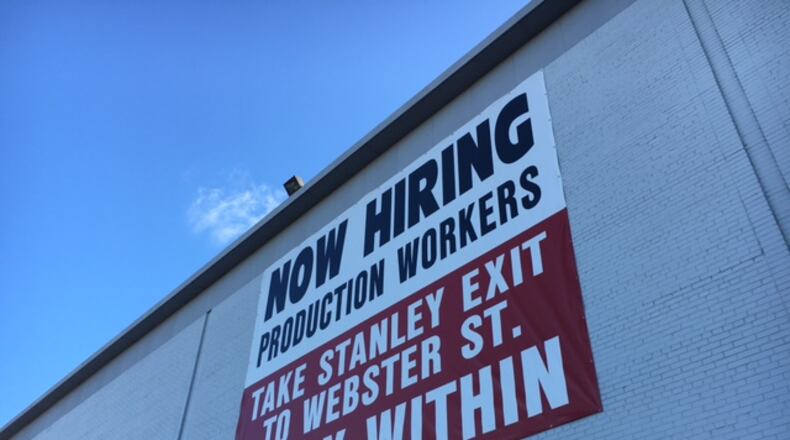But with a shrinking population, the unemployment rate also shrunk — from 7.3% in 1999 to 5.4% in 2024, said the researcher, Heather Smith, who dives into wage and work data for Policy Matters Ohio.
“Unfortunately, it is the case that employment has decreased significantly in the city of Dayton,” Smith said. “It declined pretty steadily from 1995 to 2010 before hovering around 54,000 to 55,000 for the last 15 years.”
Smith defines Dayton as the city of Dayton, meaning she refers to employment within Dayton municipal limits.
In Dayton in 1999, according to the report draft, there were 70,700 Dayton residents employed — in all fields — out of a labor pool or labor force of 76,300, leaving the number of unemployed at 5,600.
In 2024, Smith’s data points to 55,800 people employed out of a labor force of 59,000, leaving 3,200 people unemployed.
Pressed on whether the numbers decreased due to job losses or population movement, Smith said: “With deindustrialization displacing workers in Dayton, employment decreased. We did not look into population changes by geographic area for this report,” she said.
Manufacturing changes
The Dayton-Kettering-Beavercreek MSA, or metropolitan statistical area, which includes Wright-Patterson Air Force Base, has not seen the same reduction in employment, she said. That area does not coincide with Dayton city limits.
Manufacturing tells part of the story.
In Montgomery County, manufacturing employment decreased 52.2% between 1999 and 2024, according to the report draft, which was shared with the Dayton Daily News.
The Quarterly Census of Employment and Wages reports that there were 57,015 manufacturing jobs in Montgomery County in 1999, while there were 27,230 such jobs in 2024.
More recently, according to the U.S. Bureau of Labor Statistics, there were 40,700 manufacturing workers in the Dayton-Kettering-Beavercreek MSA in February 2025, slightly above the 40,400 manufacturing workers in the MSA in July this year.
With fewer manufacturing jobs and less union representation in general, Smith’s research found sluggish wage growth statewide.
Workers represented by a union tend to make higher wages than those not in a union, according to Smith. Nationally, union-represented workers made 12.8% more in 2024 than those not represented by a union, she said.
That wasn’t the only factor at work, however.
“Three recessions have occurred since then (1999), each of which hit Ohio harder and lasted longer than they did for the nation as a whole,” Smith said. “Global trade deals were also a factor, spurring deindustrialization as corporations moved operations overseas in search of economies where workers were even less protected than they are in the states.”
She added: “Major losses in manufacturing — where for many years unions secured decent pay — slowed overall wage growth. "
Between 1999 and 2024, union representation in Ohio decreased from 19.1% to 13.3%.
Credit: Bryant Billing
Credit: Bryant Billing
However, the Ohio Manufacturing Association counts some 690,000 manufacturing jobs across the state, with an annual payroll of $48 billion, the highest total annual wages of any Ohio industry.
And there are manufacturing jobs going unfilled.
According to the Manufacturing Institute in February 2025, in the previous year, the U.S. had an average of about 500,000 open jobs, driven by retirements and workplace expansions.
And many of the jobs paid well. In January 2025, more than 13 million people worked for more than 244,000 manufacturers in the U.S., according to the National Association of Manufacturers (NAM). Those jobs averaged more than $102,000 a year.
About the Author


